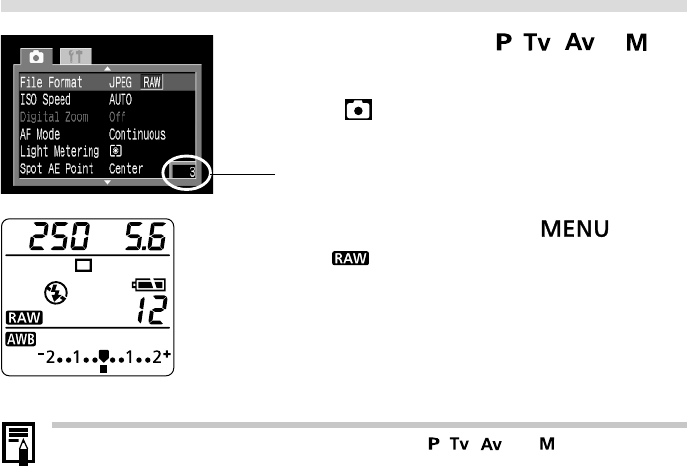
60 Shooting - Selecting Particular Effects
Changing the File Format
The recording file format can be switched to the RAW format. With the standard
JPEG file format, the camera processes images after capturing them to produce
optimal results. This format compresses images so that more can be stored on a
single CF card. However, the compression is irreversible, meaning that the original
image data cannot be recovered after processing. In contrast, the RAW format
records the image data as captured by the camera’s CCD without further
processing. RAW images are compressed, but the compression is reversible* so that
a high-quality image can be obtained from the decompressed file without any loss
of image quality. In addition, although a RAW file is larger than an equivalent JPEG
file, it is still only approximately one-quarter the size** of an uncompressed RGB
TIFF format file, making it relatively compact.
With standard uncompressed file formats, such as RGB TIFF, images are processed
in the camera and require further processing by retouching software to adjust the
image parameters, which reduces image quality. With the RAW format, however,
the original data can be used in special software* to adjust the image parameters
(white balance, contrast, sharpness and saturation) making it possible to maintain
the image quality while making changes. The resolution (2272 x 1704) and
compression settings cannot be adjusted for these images.
* The bundled software can be used to open or adjust the parameters of images recorded in the RAW file format.
Please consult the Software Starter Guide for details.
** As measured by standard Canon test conditions.
1
Turn the mode dial to , , or .
2
In the [ (Rec.)] menu, select [File Format].
• See Selecting Menus and Settings (p. 35).
• Recordable Images
3
Select [RAW] and press the button.
• The icon will show in the display panel.
4
Shoot the image.
• The RAW file format can only be selected in the , , and modes.


















